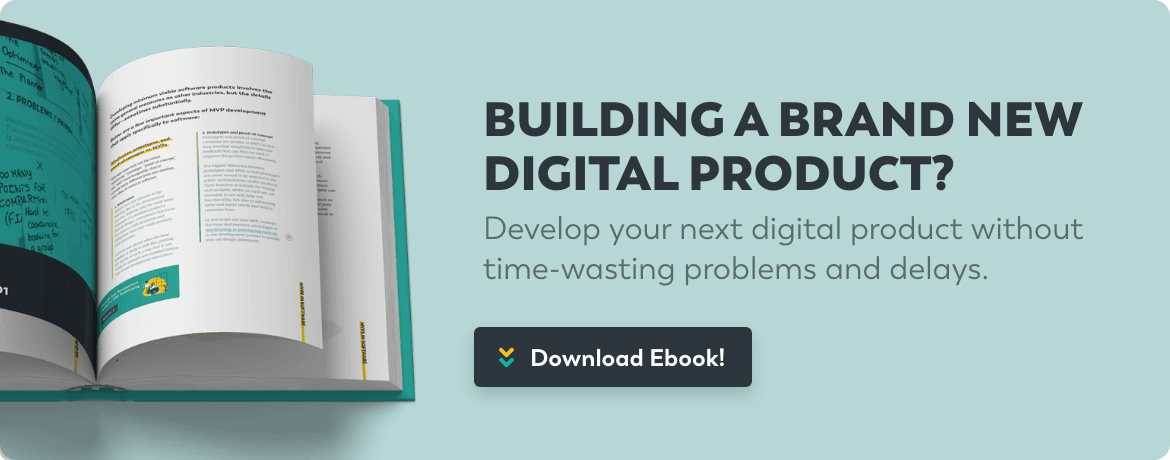Do you fully understand the product development process yet still wonder how you can release your product on your ideal timeline?
If you’re asking yourself, “How can I speed up my product development and accelerate time to market?” we’ve got the answers for you! Below, we’ll discuss six tips on how to finish product development on time.
1. Set realistic goals and timelines
The first thing to consider when planning product development is the timeframe of release and how realistic it is to meet that timeframe. Start with breaking bigger projects into smaller tasks with delineated responsibilities and completion dates. To better handle these tasks, here are some questions to consider while setting goals and timelines:
- How long will the features of the product take to build?
- Do you have the right team available for the job?
- Are there any key performance indicators (KPIs) worth paying attention to that will affect the product?
- How will the product bring value to your target audience?
In addition, delays and setbacks are a reality and are almost guaranteed to happen if a project’s timetable is long enough. Make sure your team is properly prepared to handle the demands of the project.
2. Create an effective product strategy
With realistic goals and timelines set, it’s time to focus on an effective product strategy. A product strategy is how the day-to-day tasks of product development occur. Your product strategy should define your product vision, business model, and positioning before product launch. Understand your ideal audience and what value your product can bring to them based on customer research, and develop a product roadmap that outlines the key features your product will have on release.
For more details on how to build an effective product strategy, check out our guide.
3. Create organized workflows
If your goal is to release your SaaS product on your desired timetable, your product development team needs an organized workflow. Development is driven by the execution of daily tasks by teams that understand their roles and responsibilities. One of the most efficient development practices is the Agile software development framework.
When applied to SaaS products, Agile serves as an iterative production process that focuses on building and testing over several different production cycles. These cycles are typically one to two weeks in length, and team members have explicitly defined roles and responsibilities that help them stay on task and keep the flow of production constantly going. Using Agile for product development will bring teams closer together and stomp out any errors before they make it to the final product.
4. Take advantage of automation tools
Because the production process is iterative by nature, there are some tasks that become repetitive and time-consuming.
Automation tools automate these tasks and free up your time to complete more important and creative tasks, making the overall production process faster. Deployment, testing, and monitoring are the three main tasks development teams use automation for. When properly set up, automation tools also reduce the risk of human error by quickly identifying bugs and ensuring consistent deployment.
5. Perform testing often
Speaking of testing, the last thing any company wants is a buggy, unusable product, especially just before its launch. Performance testing a product too late in its development cycle will lead to a delayed release and cause unnecessary friction. Constant performance testing will prevent this. Testing early and often catches bugs before they become a major issue and ensures the quality of a product before it reaches the market.
These errors also have consequences later down the road. As they get bigger, uncaught errors become very costly in terms of time and money. It’s expensive to correct larger issues and takes away resources in manpower that could be spent elsewhere, especially late in the development cycle.
6. Maintain communication and constant feedback
Using the Agile framework will establish constant communication with the team through the entire production cycle. But it’s important to maintain communication with constant feedback: Are things going according to plan? How are we dealing with hiccups?
Communication extends beyond the production team. Stakeholders and even customers and future end users should be informed on how production evolves over time. Communication ensures everyone involved in the project is on the same page and nothing slips through the cracks.
Constant feedback keeps the project on track by allowing adjustments to be made on the fly. Let’s look at an example. Suppose the design team wants to implement a feature they believe will make user experience more seamless. Feedback from some of the engineers reveals implementing the feature is more trouble than it’s worth because it makes the application crash more often. With the appropriate feedback, the design team is now able to focus on a different feature or design a totally different feature altogether.
Launch your product on time, every time
Bringing your product to market on time doesn’t have to be difficult. Applying the tips we discussed above will help you and your team ensure your next project is released on time.
Looking to build a digital product but can’t do it alone? We’ve got your back. We specialize in making SaaS products a reality through expert guidance and a team dedicated to making dreams a reality. Book a free consultation with us today.
